Abstract
Drawing on the case files of a major charitable agency, this paper explores how poor people experienced New York City's pioneering program of tuberculosis control. Although the program provided enormous benefits, poor New Yorkers often had pressing concerns that took priority over eradicating tuberculosis. Moreover, the program imposed extreme hardships even as it promised liberation from a terrible scourge. Poor people did not protest collectively, but many individually resisted. They delayed seeking diagnosis, disobeyed the advice promulgated by the Department of Health, attended clinics irregularly, and either refused to enroll in hospitals, sanatoria, and preventoria or fled soon after arrival.
Full text
PDF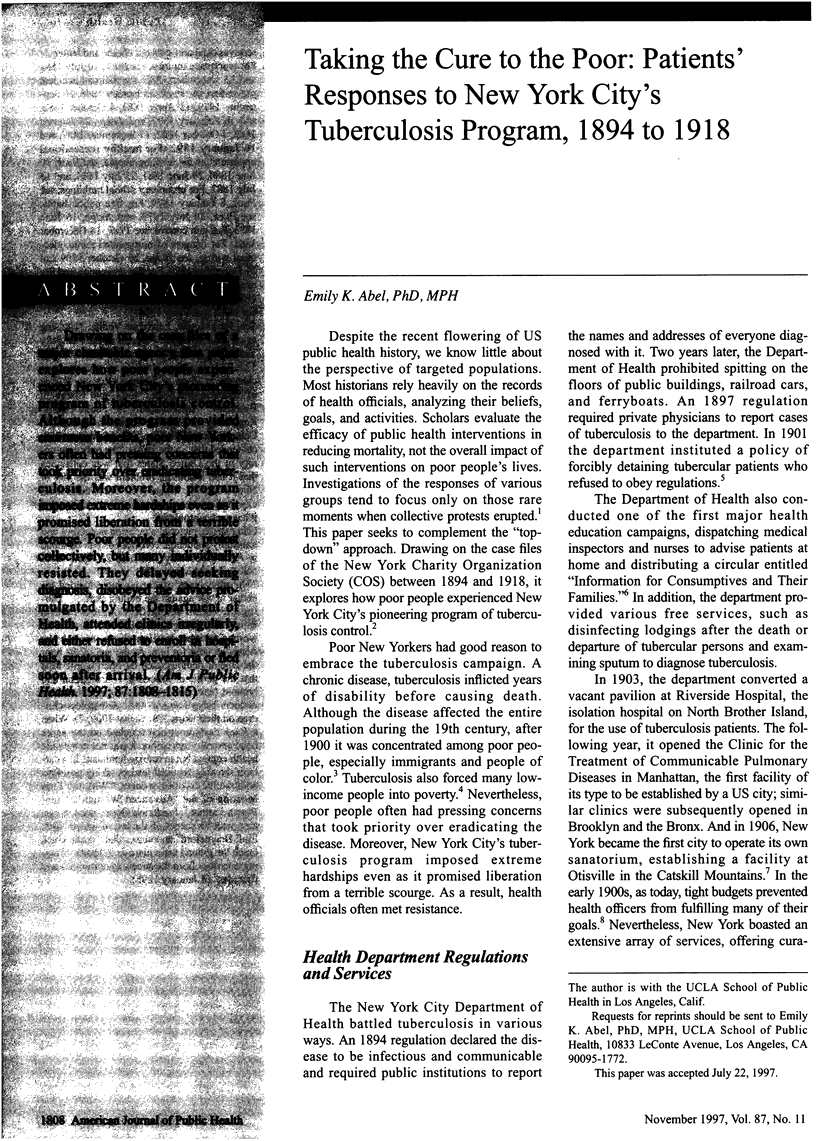
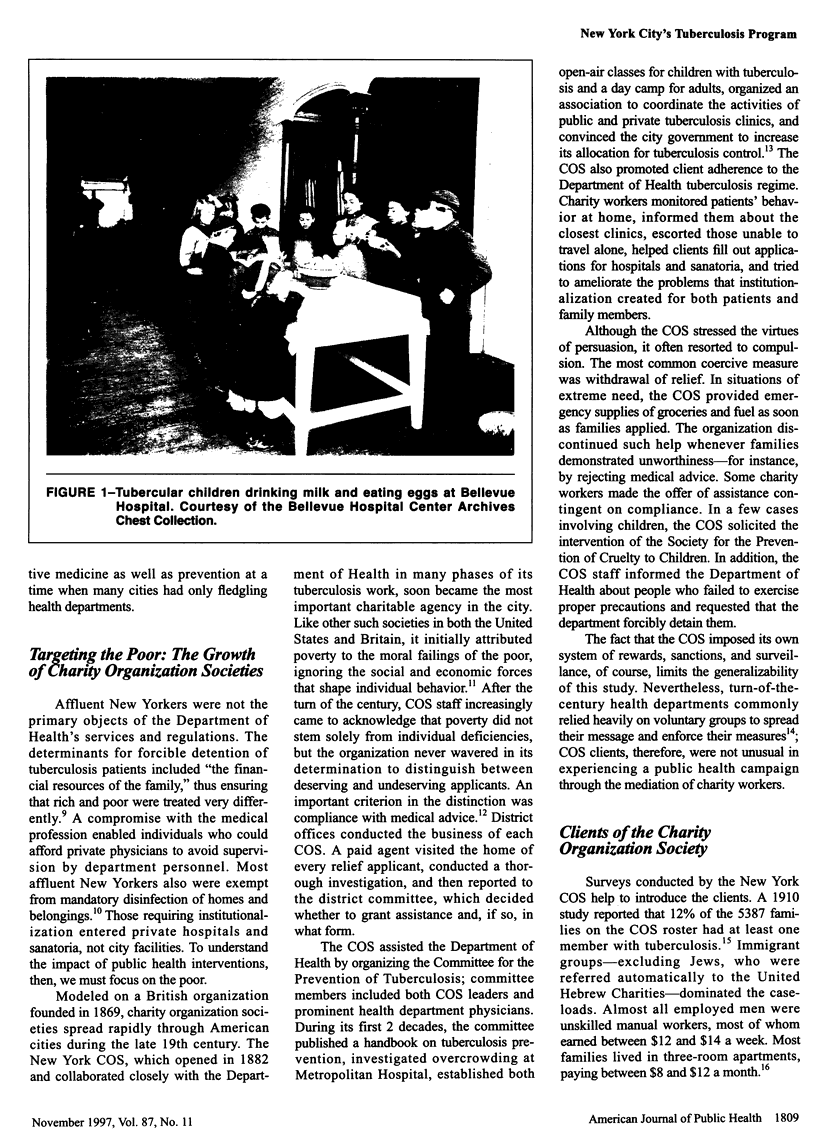

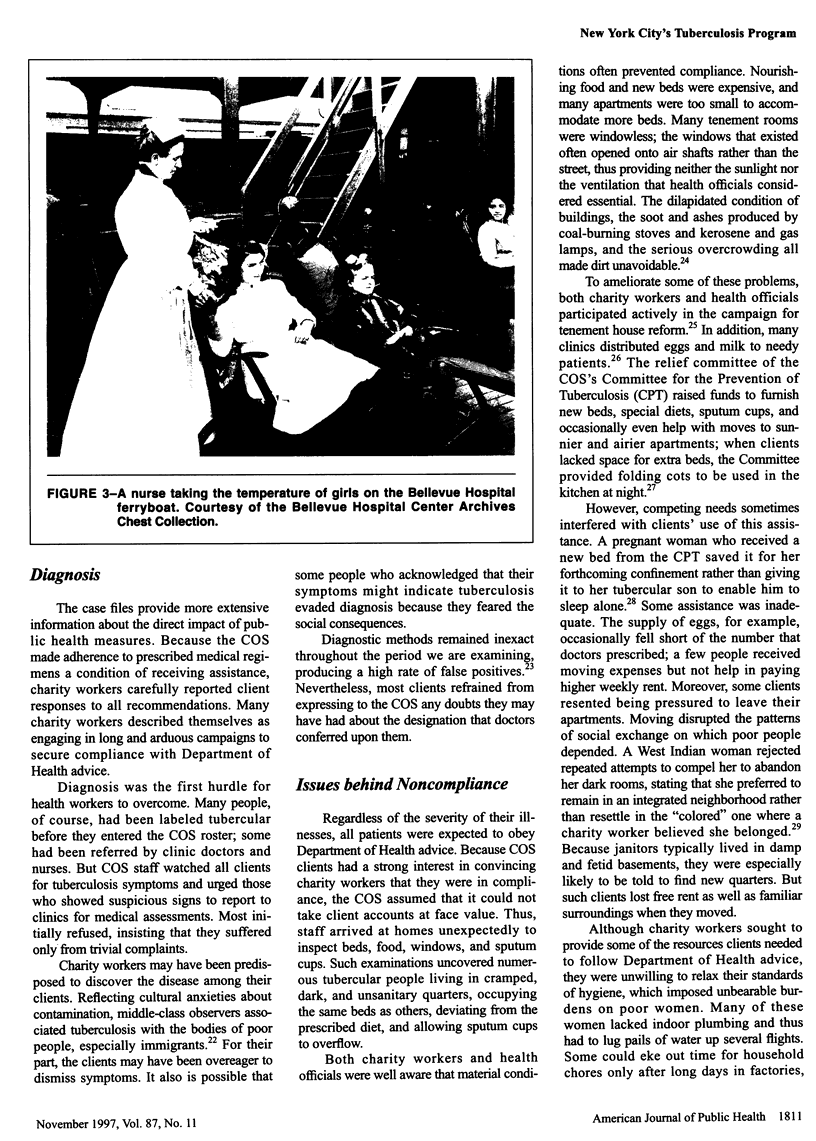
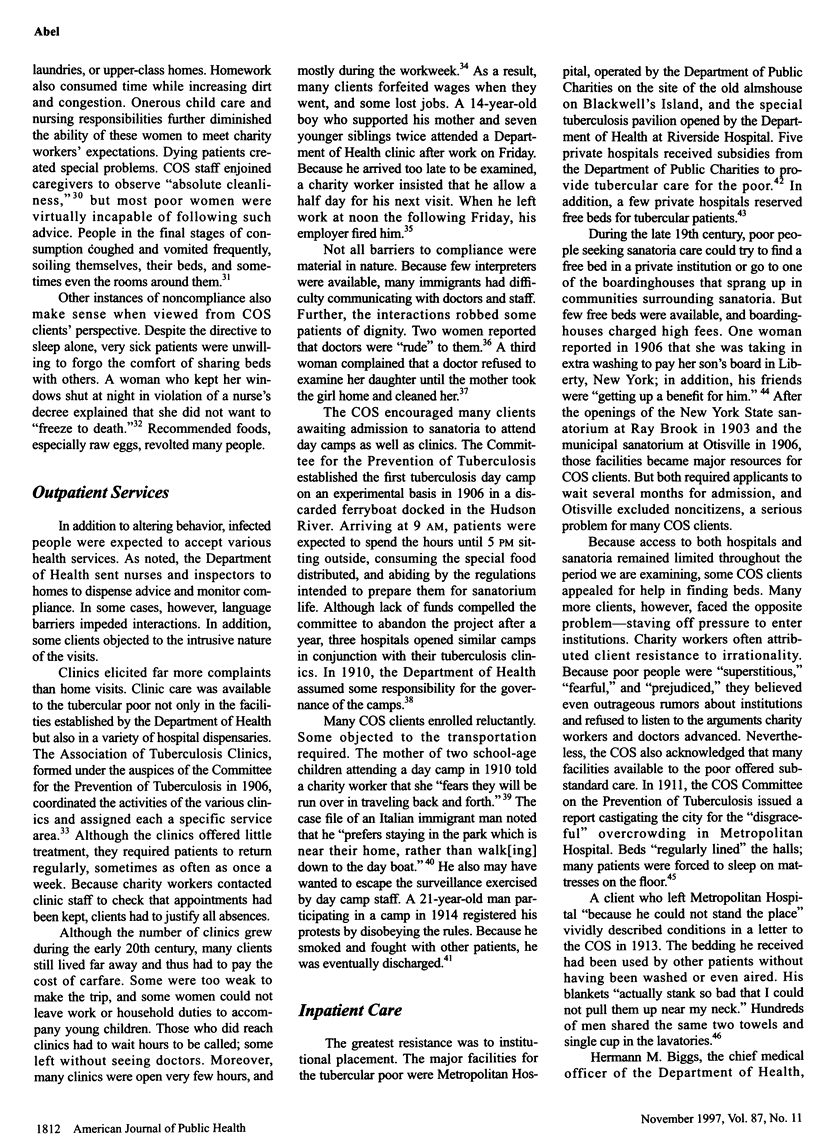
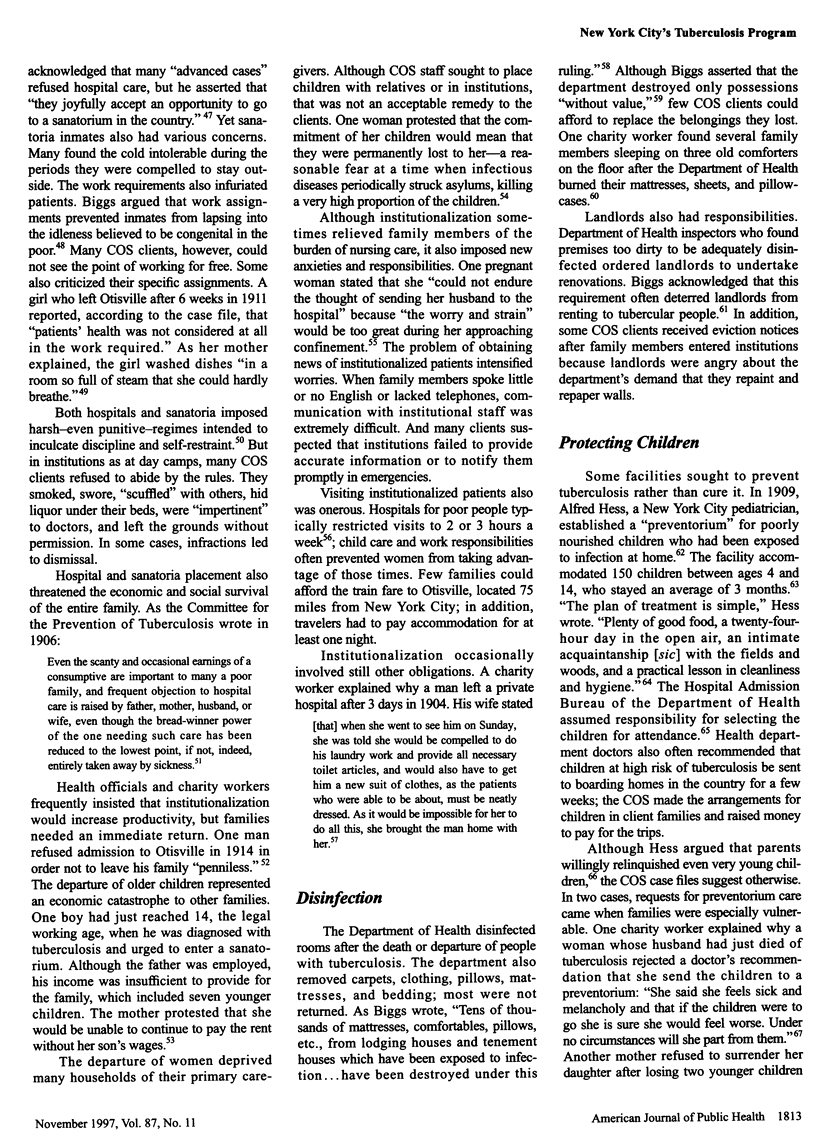
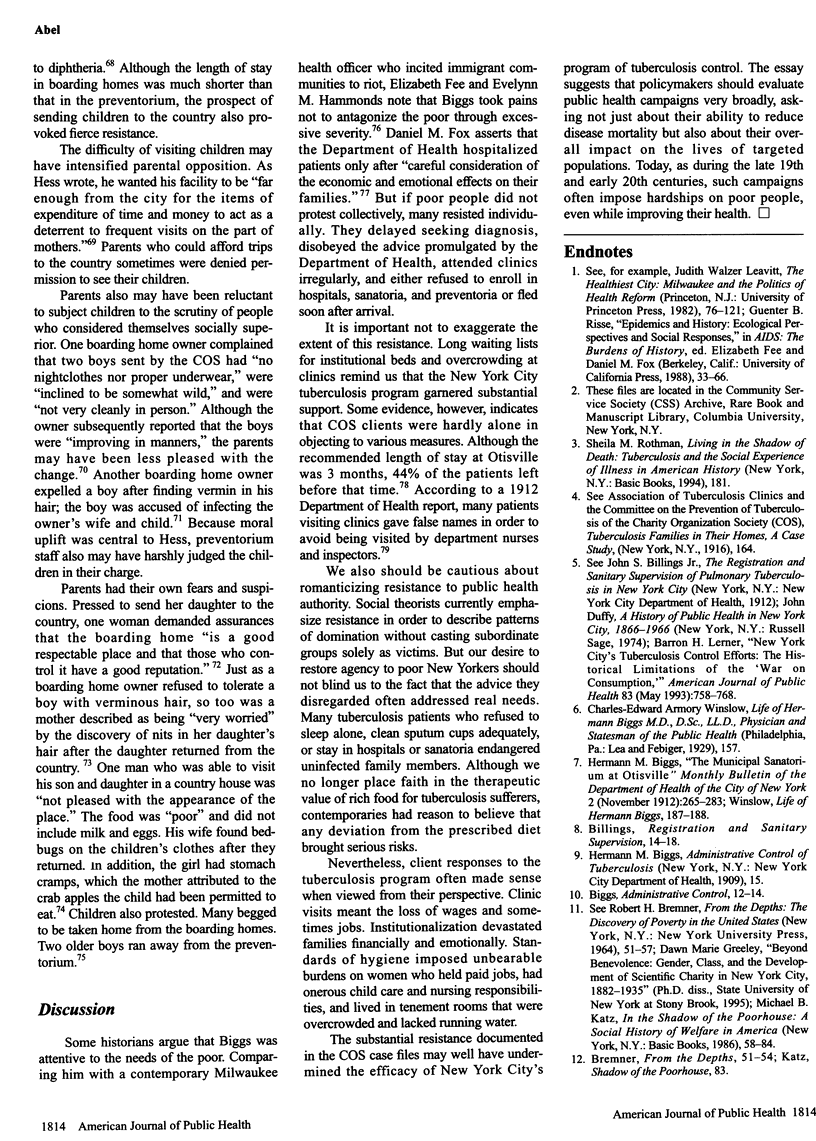
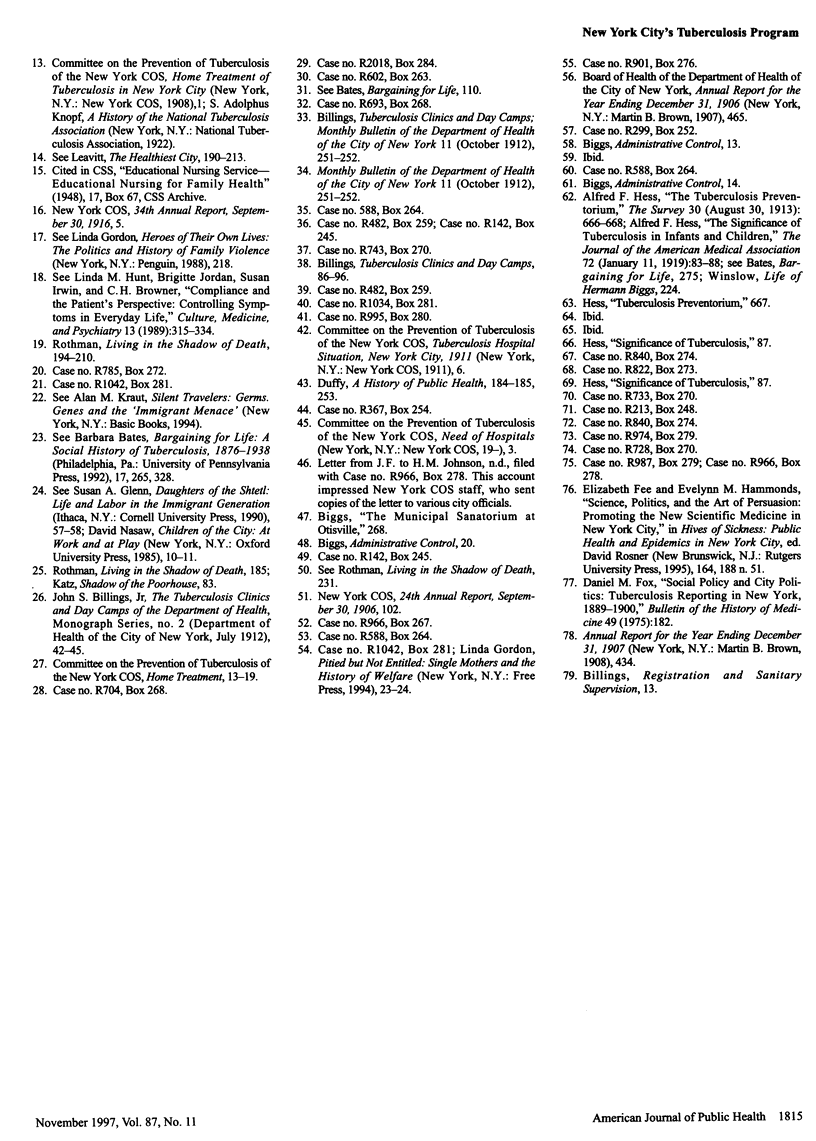
Images in this article
Selected References
These references are in PubMed. This may not be the complete list of references from this article.
- Hunt L. M., Jordan B., Irwin S., Browner C. H. Compliance and the patient's perspective: controlling symptoms in everyday life. Cult Med Psychiatry. 1989 Sep;13(3):315–334. doi: 10.1007/BF00054341. [DOI] [PubMed] [Google Scholar]
- Lerner B. H. New York City's tuberculosis control efforts: the historical limitations of the "war on consumption". Am J Public Health. 1993 May;83(5):758–766. doi: 10.2105/ajph.83.5.758. [DOI] [PMC free article] [PubMed] [Google Scholar]





